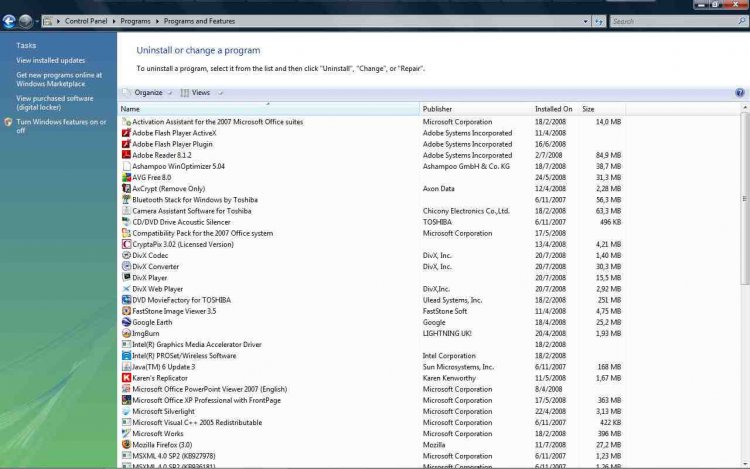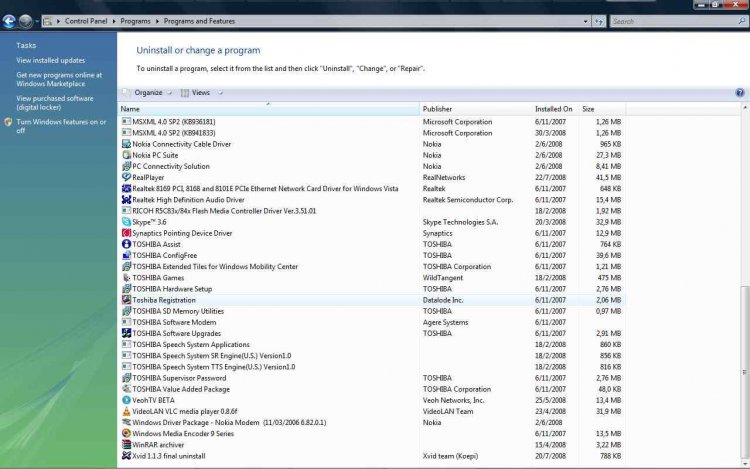Hi
Since March that I bought a new Toshiba U305-S2804
loaded with Vista Home Premium, I have a recurring startup BSOD.
Every 3 - 4 times I start the machine it crahses.
The blue screen disappears fast,
so I cannot give much info about what is in there
(is there a way to freeze this ?).
Anyway I decided (it takes some time to decide
to attack windows problems...) to check the system diagnostics
and there are a number of them.
I try to "target" the most frequent system errors assuming that
they might be the cause or at least give a hint about it.
I see in the system log a number of EventID=13, Source=ACPI.
They seem to happen daily and even more that once a day.
Also I see a lot of EventID=4385, Source=Servicing,
but they don't show up after April, it seems that some
Windows update fixed this.
Then I have a number of EventId=5007, Source=WerSvc.
Does any of the above, seem to be possibly the source of a BSOD
during starting up ?
Thank you in advance,
mesa
Since March that I bought a new Toshiba U305-S2804
loaded with Vista Home Premium, I have a recurring startup BSOD.
Every 3 - 4 times I start the machine it crahses.
The blue screen disappears fast,
so I cannot give much info about what is in there
(is there a way to freeze this ?).
Anyway I decided (it takes some time to decide
to attack windows problems...) to check the system diagnostics
and there are a number of them.
I try to "target" the most frequent system errors assuming that
they might be the cause or at least give a hint about it.
I see in the system log a number of EventID=13, Source=ACPI.
They seem to happen daily and even more that once a day.
Also I see a lot of EventID=4385, Source=Servicing,
but they don't show up after April, it seems that some
Windows update fixed this.
Then I have a number of EventId=5007, Source=WerSvc.
Does any of the above, seem to be possibly the source of a BSOD
during starting up ?
Thank you in advance,
mesa


 \\?\Volume{930d6935-de00-11dc-9cbc-806e6f6e6963}\
\\?\Volume{930d6935-de00-11dc-9cbc-806e6f6e6963}\










